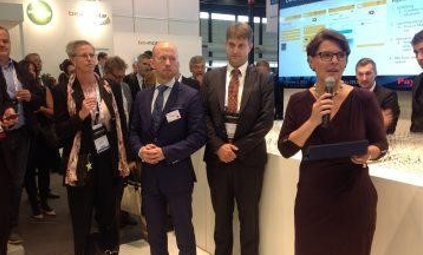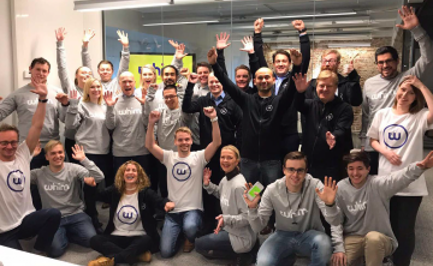Port of Rotterdam chose Awake.AI as a smart port development partner to enable smart ships to make port calls in the future.
Awake.AI is a frontrunner in the field of digitizing maritime logistics for more efficient port calls and smarter operational planning. Port of Rotterdam is fully committed to innovation, maximizing the benefits of the new potential that digitization offers. Together they worked toward a smarter future.
Shifting Toward Autonomous Future in Maritime
Maritime logistics and port operations are experiencing ever more extensive digitalization in the coming years. Environmental sustainability is the key driving force in this transformation. More automation of processes will be introduced, more mandatory environmental reporting will be enabled. As maritime businesses will have to adapt to more stringent environmental regulations, for example complying with the “Paris Agreement” and the “2030 Agenda for Sustainable Development”, it will have an improving effect on air quality in port cities as well as providing much greater efficiency and profits for all collaborating actors.
Automation will eventually lead to smarter and even autonomous ships plus more extensive autonomous maritime logistics operations. For the whole maritime shipping industry to stay relevant in the future, it needs to start offering constantly better customer service in all dimensions. This means introducing more digital services throughout the value chain. Those companies and ports who do not fully engage into digitalization now, will be left behind. Trying to play catch up later, gets harder and harder for them.
The Need – Digital Twin for The Port of Rotterdam
The largest seaport in Europe, The Port of Rotterdam, seeks to host smart ships in the future. Port of Rotterdam wanted to make their port operations more efficient, reliable, and predictable with a commitment to provide outstanding digital facilities and data services. Also, the port wants to offer their users a seamless and trusted experience when doing business with them.
To achieve this objective, they wanted to create a digital twin of the actual port to test and learn about the transformational process for this smarter future, without risking their ongoing port operation.
The physical properties and characteristics of the Port of Rotterdam were required to be transferred into a simulation where their multiple variables could be changed and tested fast and effectively, and without risking the physical operation of the port. Also, with digital twins, addressing the potential risks in safety is a tremendous help, when compared with real-world trial and error. The Port of Rotterdam aspires to be the safest and the most efficient port in the world as well, and is constantly working on this ambition.
The massive scale of the operation of the Port of Rotterdam with its 8,8 million containers and almost 15 million total TEU (fourty-foot equivalent unit) also translates to a tremendous environmental impact when port calls, material flows and smart ships are optimized. Using digital twins is a pioneering way to build an understanding of the key metrics of large industrial companies and organizations, as well as to learn.
The Solution – The Smartest Port of the Future Meets Awake.AI
Awake.AI’s solution was to enable smart shipping by creating a digital port and ship platform with digital handshakes between ships and ports through Awake’s own smart platform. This gives an excellent view on determining possible information gaps, standard development requirements and offers better overall optimization of port calls.
For testing smart ships and digital port operations, a smart ship port call management system and simulator was created, which is not only simulating real world scenarios, but also demonstrating the impact of any given changes, before any physical changes would be made to the infrastructure of the port. This truly provides a better operational planning capability and more efficient port calls. Awake.AI specializes in AI and machine learning (ML) in maritime logistics, and thus it was a natural choice for the Port of Rotterdam to work together with Awake.AI for exploring changes in Europe in the field of smart shipping and smart ports.
Benefits
Toward smarter maritime logistics
Awake.AI expects that the first physical smart vessels in commercial operation will already be operating by 2025. The first vessels can perform missions in or near the port area such as remote piloting.
Awake.AI is highly committed to helping its clients in becoming early adopters and industry leaders in digitizing and automating port operations, as well as optimizing complete value chains. This is done through supporting the clients all the way from conceptualization to design, implementation to optimization.
Leading role for Europe
As environmental concerns are at the very core of the Port of Rotterdam, they are also committed to combating climate change and aim to play a leading role in the global energy transition.
Digitalization and automation are introducing entirely new avenues for making maritime logistics and port calls more efficient, eventually leading to cleaner waters, significantly lower emissions, and lower operational costs, as well as wasting less time. A smarter future is also a greener future.
With Awake’s platform and its growing number of ecosystem partners, the ambition is to reduce cumulatively 10% of the global CO2 emissions from shipping by 2030. Awake.AI is ensuring the future of sustainable and intelligent maritime logistics.
Learn more
Read the whole case story on Awake.AI’s website.




